For our last Friday Night Lights of the year let’s “Focus On Your NVGs.” Pun intended. Most night vision devices have an adjustable front focus. However, for those of you who have looked through helmet-mounted or handheld night vision devices, you will know that they have a very shallow depth of field (DOF). DOF is a camera term. Basically, it means if you focus on something far, everything up close will be out of focus. If you focus on something close up, then everything far away will be out of focus. There are some add-on attachment devices that can help you refocus your NVGs without having to twist the front objective lens as well as increase DOF.
Day Filter

If you recall, I mentioned the NVG day filter back in my article about NVG filters. It is designed to let in a little bit of light. As a by-product, it also acts as a fixed aperture. For those who are not that familiar with camera lens technology, they have a thing called an aperture. For manual lenses like those found on SLR (Single Lens Reflex) cameras, they are adjustable. The aperture is basically a hole that you open or constrict in those lenses. The smaller the aperture the more DOF you get so you can have objects far and near simultaneously in focus. The wider the aperture the less DOF you get.
The Day Filter works as a last-ditch effort however there is a drawback to using this filter to help refocus your objective lens since it is so small in diameter it reduces the amount of light coming into your night vision device.

In the photo above, I am standing a few feet from the car. The badge on the side is just out of focus. My objective lens is set to infinite focus. In the photo below I put the day filter on. See how noisy the image is? This is called scintillation. You see this occur in low light areas where there is very little light entering the intensifier tube.

I took those pictures above outside at night with street lights on. Even with all that ambient light, the image was rather dark with the Day Filter over the lens. This happens with manual cameras as well. The smaller the aperture the less light enters the camera. So you have to either have a long exposure or add a ton of light to compensate. With regards to your NVGs, you could compensate with an IR illuminator to increase the amount of light entering the tube. The one nice thing about the Day Filter is that they are cheap. They cost less than $10 each. One downside is they are friction fit. So you have to snap them on or remove them entirely. You can tether them to your NVGs but then they would dangle.
DIY Hacked Butler Creek Flip Cap


The next step to focus on your NVGs is another budget-friendly option but works on the same principle as the day filter. A modified Butler Creek flip cap works better than the day filter. First of all, it is a flip cap. With the modified lid down, you increase your DOF but it too reduces light into the tube. So you can flip the modified cap out of the way if you no longer want increased DOF and thus increase the amount of light coming in.
The modification is rather straight forward. Get an 09A sized butler creek cap and drill a hole in the center. How big of a hole you drill depends on your preference. Here are some photos by my friend KoTactical with varying sized holes drilled into a Bulter Creek cap. He started with the smallest hole and drilled it wider two more times. Just like the day filter, the smaller the hole the more DOF he has and more objects will be in focus at closer distances.
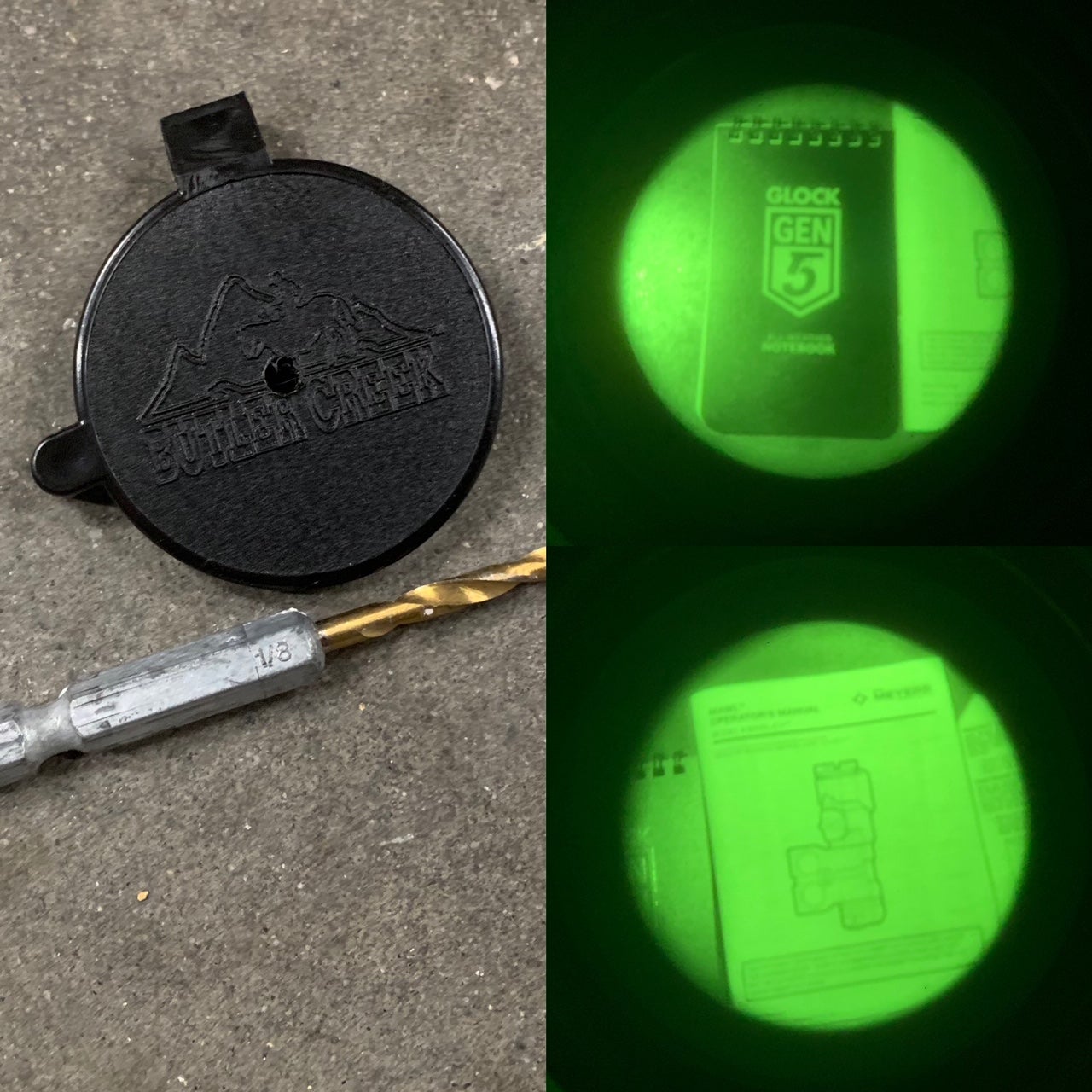
Photo by KoTactical
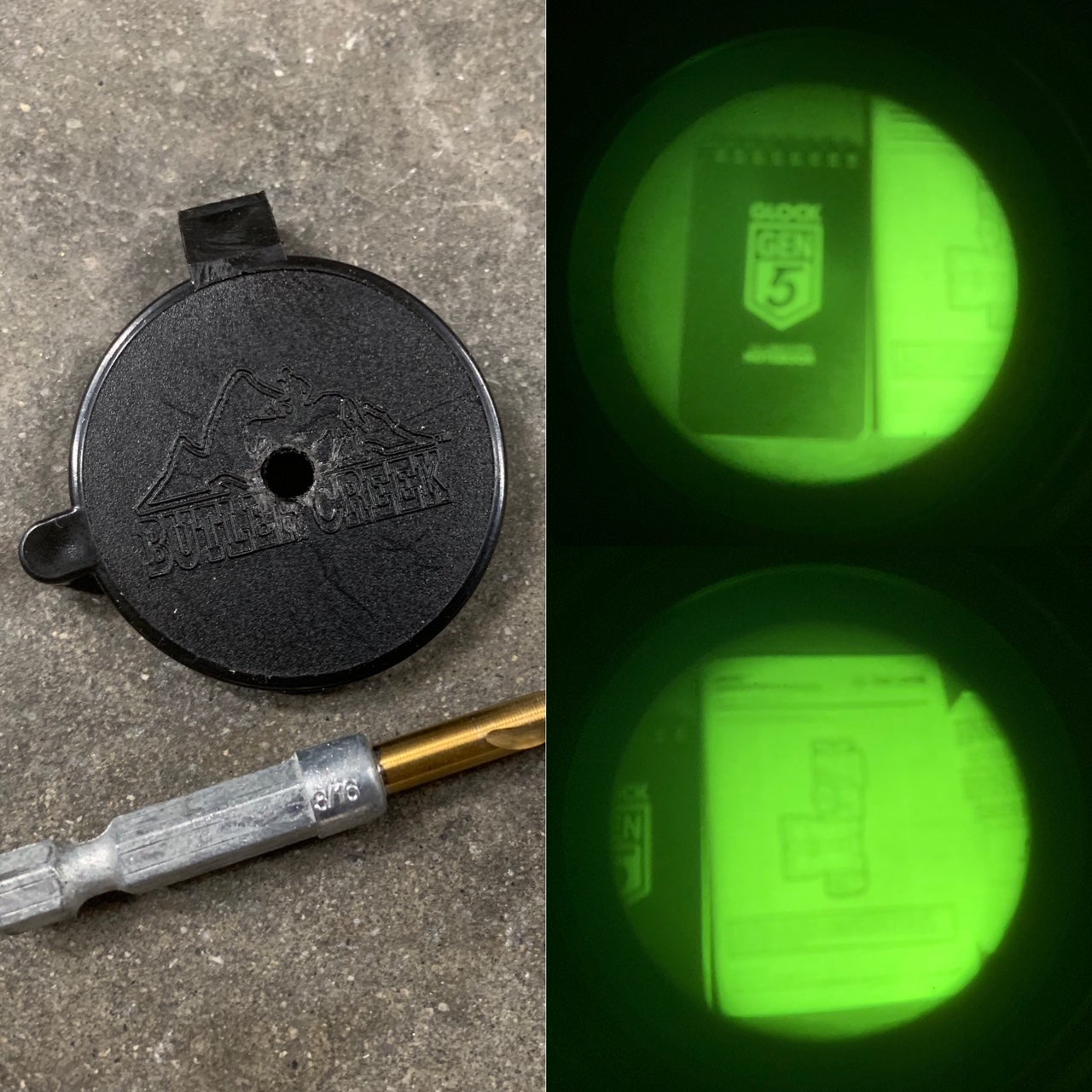
Photo by KoTactical
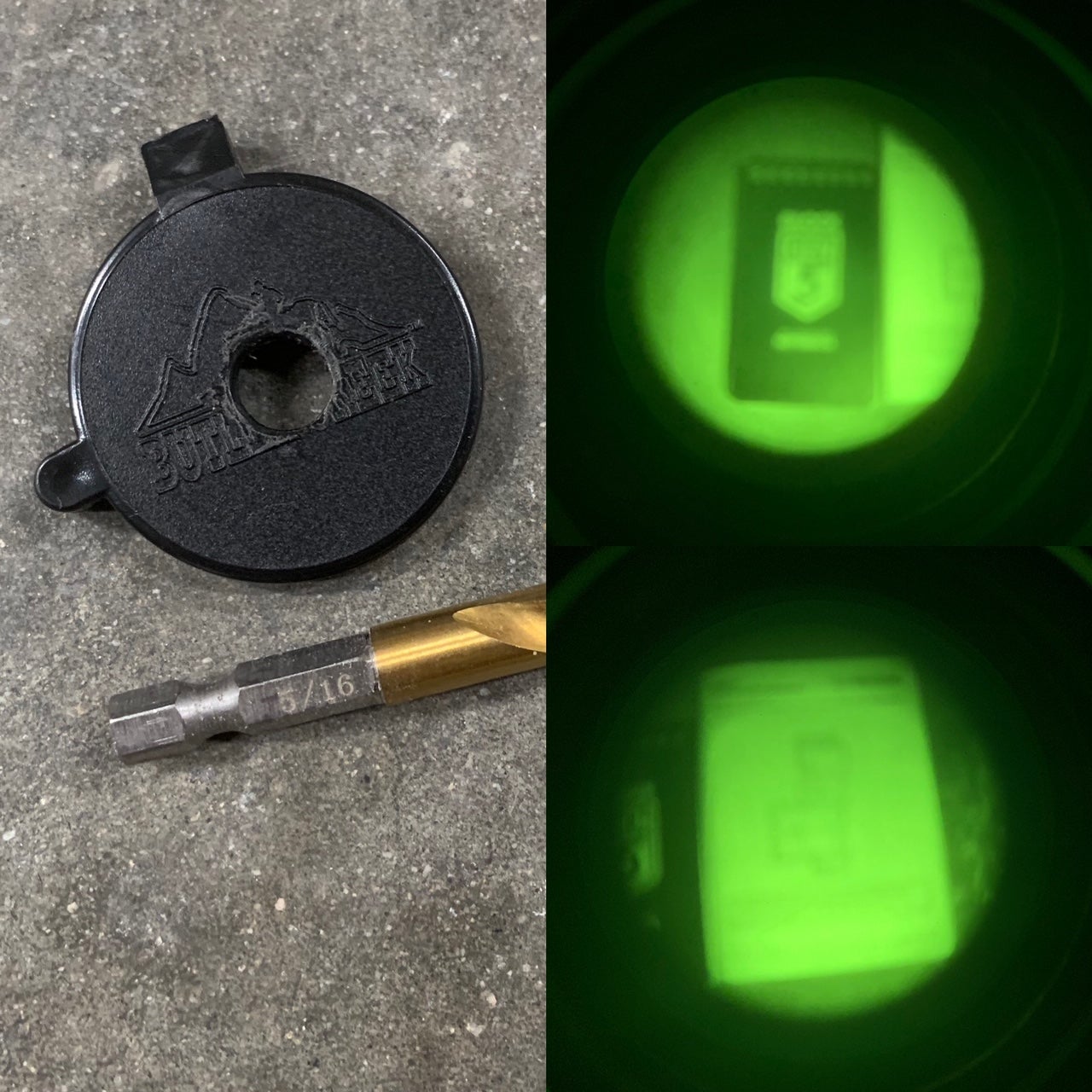
Photo by KoTactical
With this design, you can always go to a bigger aperture. You cannot go back to a smaller aperture unless you buy a new Butler Creek cap. You can find them for about $15 or less online then you just drill a hole in the center.
Focus On Your NVGs With A 2 Position Aperture

Photo by KoTactical
Next up in focus on your NVGs is a modification for your butler creek flip caps. The 2 position aperture replaces the lid of your butler creek 09A. The 2 position cap is 3 printed and comes as a single piece from Shape Ways. Here is a link to buy it if you are interested. It is $20 for one.

Photo by KoTactical
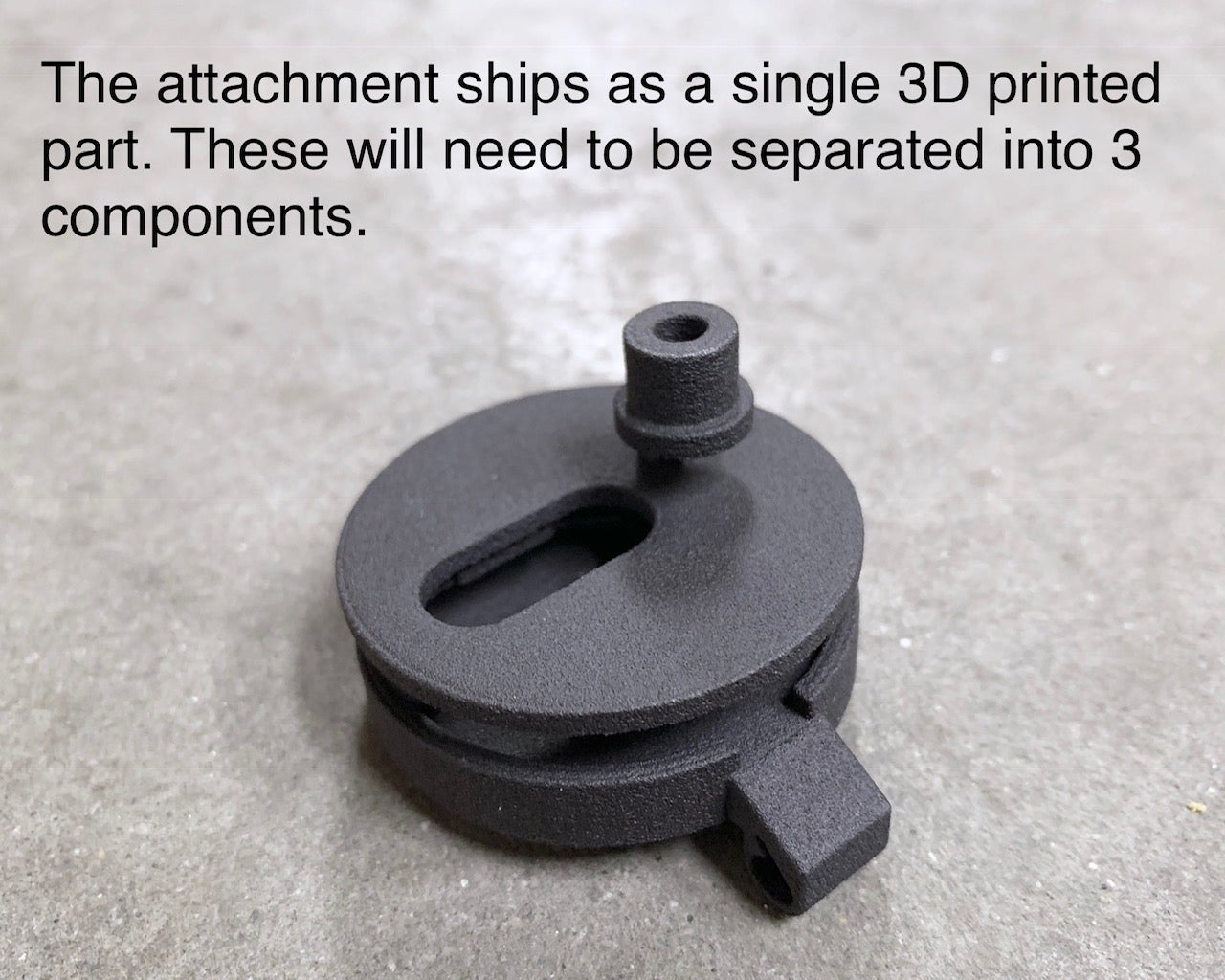
Photo by KoTactical
This 3D printed 2 position lens cap has a special feature. It has a secondary aperture that you can just slide it across for better DOF.
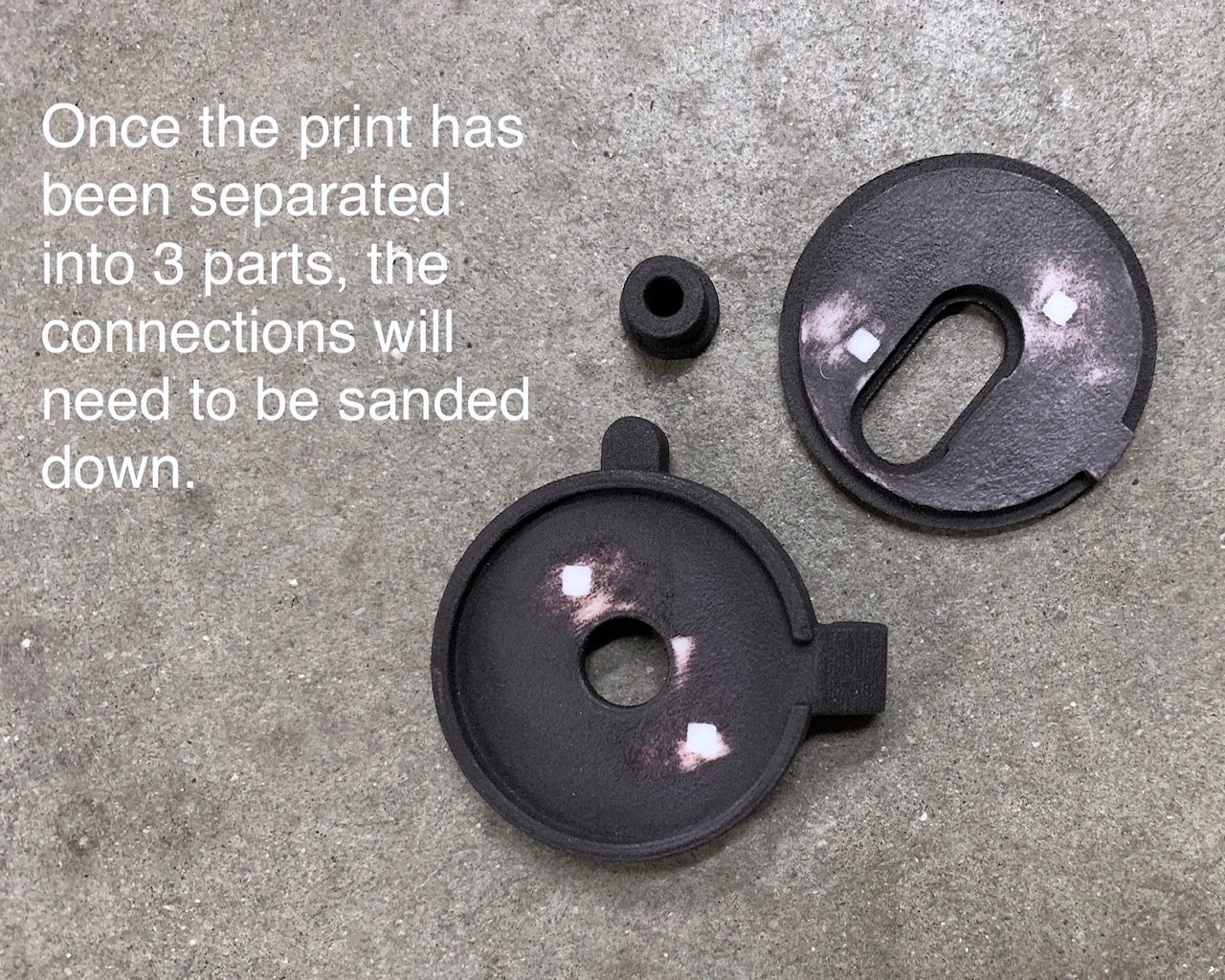
Photo by KoTactical
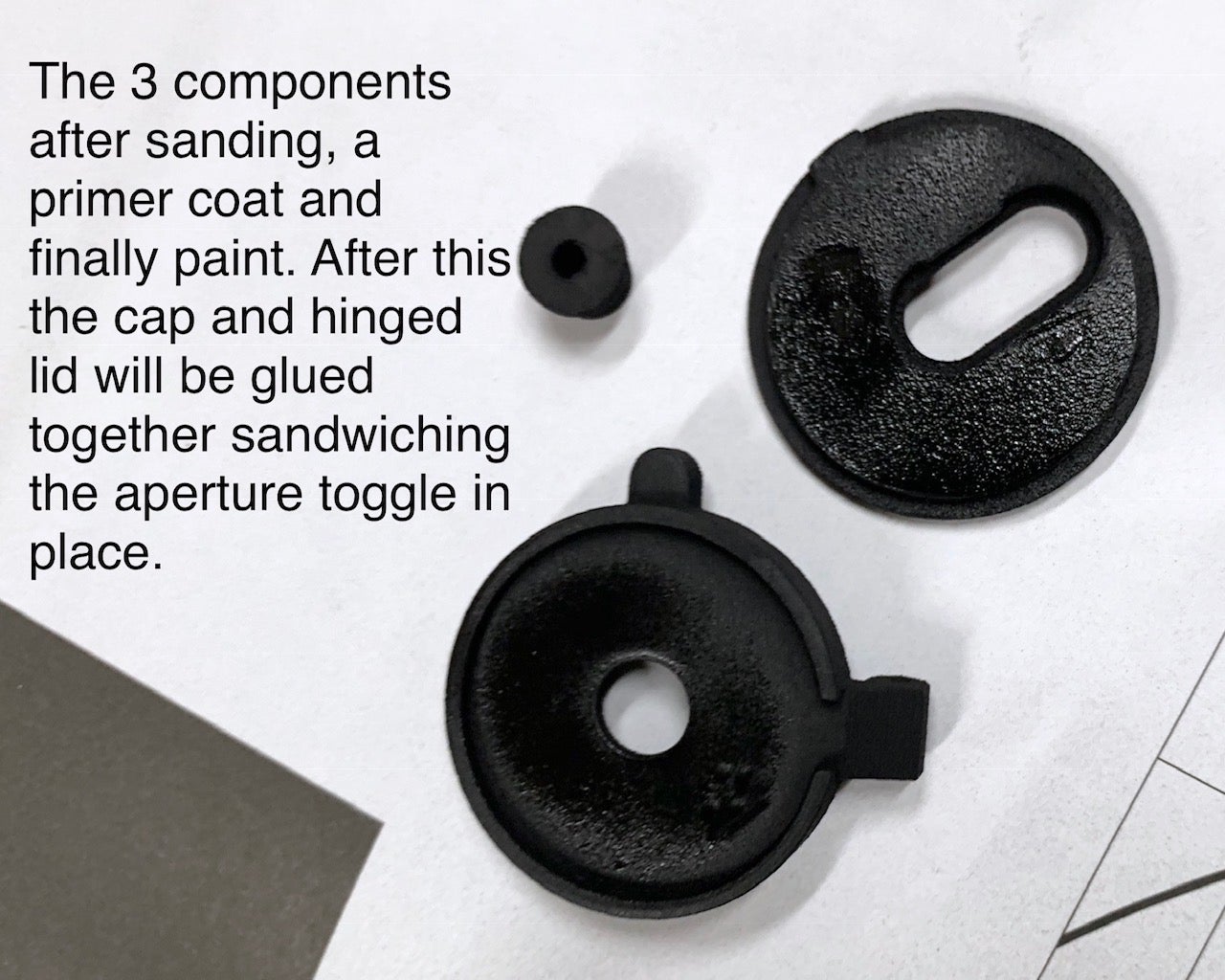
Photo by KoTactical
Here are some photos by KoTactical showing the increased DOF and focus at a fixed distance.



Phokus Hoplite

Photo by Phokus Research
For a less DIY method and a more finalized product, you can get the Phokus Hoplite. It is similar to the 2 position aperture lens cap. However, instead of a sliding aperture, the Hoplite has interchangeable apertures. Without the smaller aperture, the dust cover has a 5/16″ diameter hole. You can then install a 3/16″ or 1/8″ aperture to increase DOF at the compromise of light.

Photo by Phokus Research

Photo by Phokus Research
The Hoplite is a complete lens cap. It has a sophisticated closing band that tightens and locks onto the objective lens of your NVGs.



An added benefit to the Hoplite is that it comes with a sacrificial lens built into it to protect your objective lens.
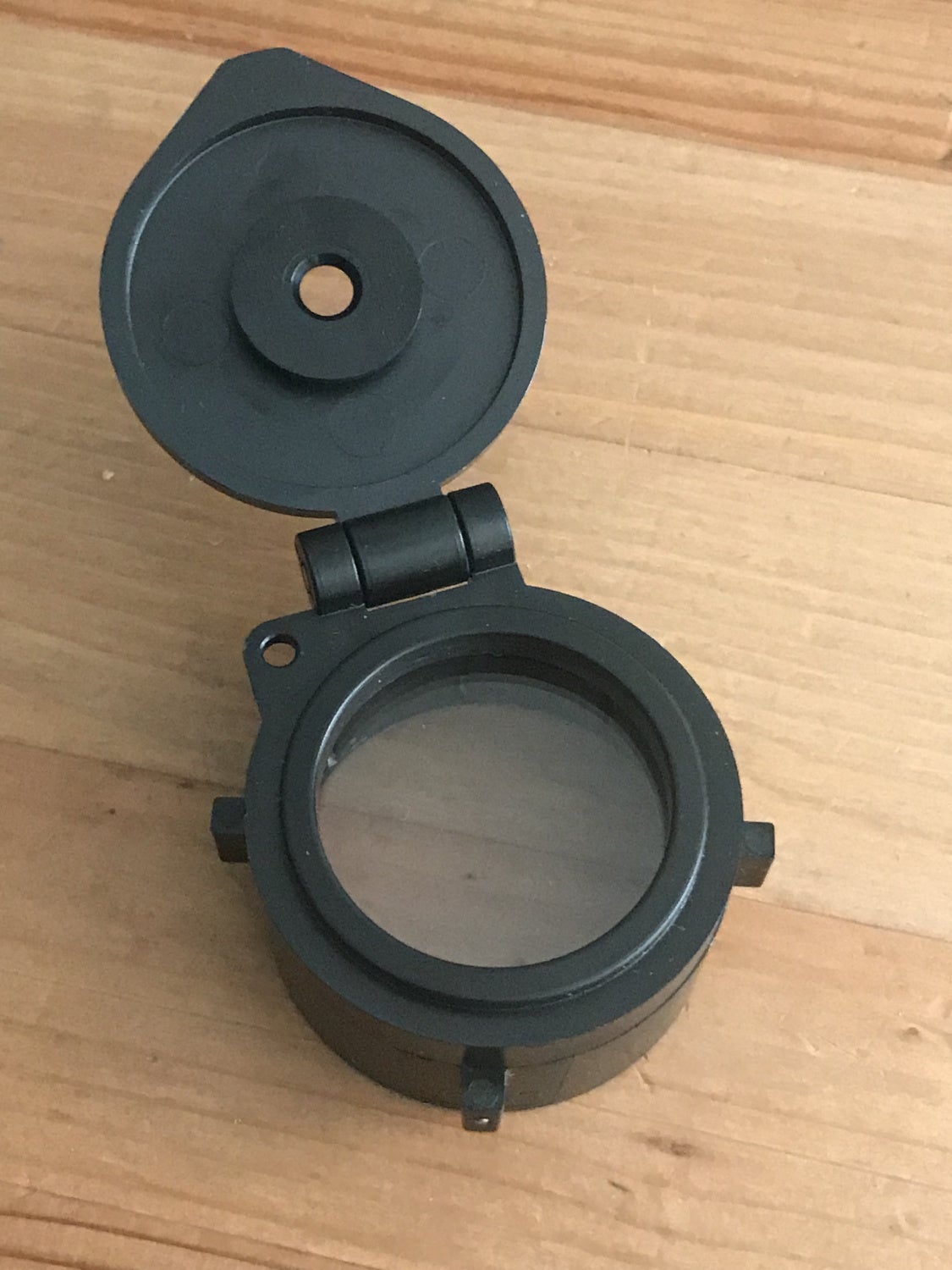
Aperture removed from the Hoplite cap below.

A single Hoplite can be purchased from Phokus Research for $114.99.
Phokus Tarsier Eclipse
For the ultimate add-on for your NVGs, you can go with the Tarsier Eclipse. While the previous options provide you with stepped aperture options, the Tarsier Eclipse is an adjustable aperture.


The Tarsier Eclipse has a rectangular knob that you use to spin the device and change the diameter of the aperture inside. It looks like a camera lens aperture. There are two downsides to this device. The first is the cost. The Tarsier Eclipse is $240 each. The second issue is that the force required to open or close the aperture is greater than the friction of your objective lens. So often you end up changing your objective lens focus rather than changing the diameter of the aperture.
Steiner Universal Refocus Lens
One issue with most of the options above is the fact that you are reducing the amount of light entering the intensifier tube. To focus on your NVGs without compromising ambient light you could get the Steiner refocus lens. It is a lens that shifts the focus but does not reduce the light entering the intensifier tube. It does not increase DOF though.

Sort of like a tactical monocle it is similar to the Butler Creek style cap and flips out of the way.

While the refocus lens does not reduce the light entering your NVGs, it does shift focus. While set to infinite focus, the refocus lens will shift your NVG focus to 18″ in front of the objective lens. This is around the position of my hands outstretched in front of me.
I found the refocus lens to be too specific for general use. It is great if you need to interact with anything at arms reach. However, anything outside or inside of that range rapidly goes out of focus. So this lens is limited to tasks like reading maps or administering first aid. But as I said you will only be able to see things at arm’s length. If you move your head closer or further away just a little bit, things will go out of focus.
The Steiner refocus lens retails for around $75 on various websites.
Final Thoughts
Do you need a refocus device for your NVGs? That is a personal preference issue and mission-specific issue. How often do you need to see things close up under night vision? For NVGs that use PVS-7/14 style objective lenses, all it takes is about 160° turn to go from far focus to close focus. However other objective lenses like those found on Anvis type goggles have really fine threads and it takes multiple revolutions to switch from infinite focus to close focus. For that reason a refocus lens would be a great add on.
Smaller aperture devices like the ones above are a great and simple exploit based on proven photography principles. If you are ok with sacrificing a bit of light for the sake of improved DOF then get one of the refocusing devices above.
 Your Privacy Choices
Your Privacy Choices
